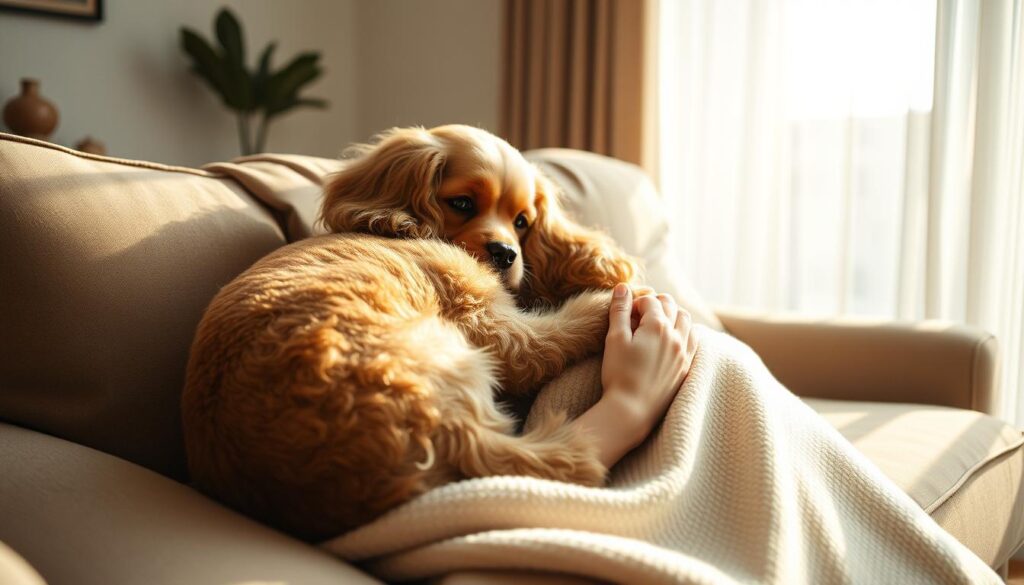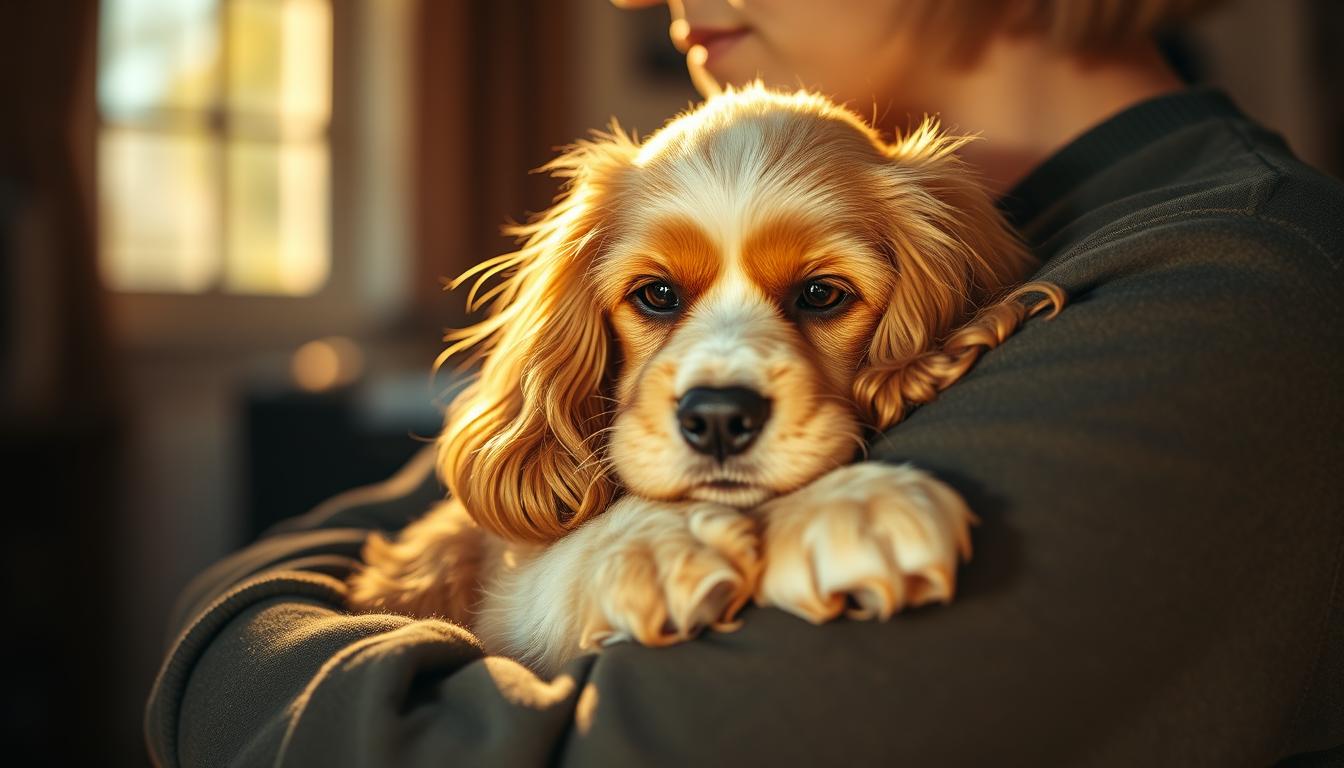Many affectionate dogs thrive on close physical contact with their humans, and this popular Australian breed is no exception. While some furry companions adore curling up on laps or nuzzling into shoulders, others prefer quieter displays of connection. Understanding your pet’s unique preferences is key to nurturing trust and companionship.
Every dog has distinct comfort levels with physical touch, shaped by temperament, upbringing, and even genetics. Some may lean into pats like velcro, while others show love through gentle proximity rather than full-body snuggles. Recognising these differences helps create positive interactions that strengthen your bond without overwhelming your four-legged mate.
This guide shares practical strategies for Aussie owners to connect with their pets through respectful affection. You’ll learn how to read subtle communication cues, create inviting environments for closeness, and balance attention with healthy boundaries. Whether your pal is a certified lap-dog or a more independent spirit, these insights will help you both feel secure and valued.
Key Takeaways
- Individual personality greatly influences snuggle preferences
- Respectful interaction builds lasting trust with your pet
- Body language reveals comfort levels during bonding
- Positive reinforcement encourages relaxed connection
- Consistent routines support secure relationships
Understanding Your Cocker Spaniel: Heritage and Personality
These charismatic companions carry centuries of specialised breeding in their DNA. Originally developed as tireless hunting partners, both American Cocker Spaniels and English Cockers retain the spirited nature that made them exceptional gundogs. Their history shapes how they interact with families today – including their approach to affection.
Breed History and Working Background
Developed to flush and retrieve game across rugged terrain, these dogs boast remarkable stamina and problem-solving skills. The American Cocker Spaniel evolved from its English cousin, adapting to different prey and landscapes. Both varieties share webbed feet for swimming and noses that can track scents for hours.
This working heritage explains why many Cockers prefer interactive play over passive snuggles. Their minds thrive on challenges – whether it’s fetching toys or solving food puzzles. Satisfying this instinctual drive creates a calmer, more receptive companion when quiet bonding moments arise.
Unique Personality Traits and Affection Levels
While known for loyalty, individual personality varies widely. Some show devotion through constant shadowing, while others demonstrate love by bringing “gifts” like sticks or toys. Many Cockers cycle between bursts of energy and sudden crashes into lap-napping mode.
Recognising these patterns helps owners time cuddle sessions effectively. Post-exercise relaxation often brings out their most affectionate side. Pairing physical touch with positive reinforcement – like gentle praise during wind-down periods – builds trust in these sensitive souls.
Debunking Common Myths About Cockers and Cuddling
Those soulful eyes and silky ears often create false assumptions about canine affection needs. While many dogs enjoy human contact, every dog has unique comfort levels – including this beloved breed.

Contrary to popular belief, a spaniel’s plush appearance doesn’t guarantee constant snuggling enthusiasm. Research shows 38% of companion animals prefer intermittent physical contact. Three key myths need addressing:
- “All Cockers crave hugs”: Many enjoy brief pats but feel trapped in prolonged embraces
- “They’ll love everyone equally”: Most form strongest bonds with consistent caregivers
- “Puppy preferences predict adult behaviour”: Tolerance often changes with age and experience
Aussie owners frequently report surprises. One Melbourne family’s rescue cocker spaniel adores children but avoids adult laps. Another’s show-line pet seeks couch cuddles only during thunderstorms.
Respecting these variations builds healthier relationships. Forced affection can strain trust, while observing natural rhythms strengthens lifelong bonds. Remember – quality matters more than quantity in canine connections.
Enhancing cocker spaniel cuddle time
Creating meaningful interactions requires observing and adapting to your pet’s preferences. A thoughtful approach helps build trust while respecting their need for autonomy. Focus on three key aspects: environmental setup, communication clarity, and positive reinforcement.

Establishing a Routine for Snuggle Sessions
Consistency helps pets anticipate relaxed moments. Try pairing calm activities with specific times of day – after morning walks or during evening wind-downs work well. This table shows effective routine elements:
| Effective Routine | Ineffective Approach |
|---|---|
| Post-exercise relaxation | Random forced interactions |
| Quiet afternoon sessions | Loud environment cuddles |
| Combined with gentle grooming | Isolated physical contact |
Watch for natural invitations like leaning against your leg or bringing toys. These signals often indicate readiness for connection.
Respecting Your Dog’s Cues and Boundaries
Subtle body language reveals comfort levels. Look for:
- Relaxed ears and soft blinking
- Voluntary approach and settled posture
- Paw lifts or head tilts during contact
If your companion moves away or licks their lips, pause immediately. Forced contact can trigger stress responses. Instead, reward voluntary closeness with calm praise or light scratches.
Balancing routine with responsiveness creates sustainable bonding. Remember – quality interactions strengthen relationships more than duration.
Recognising Your Dog’s Cuddle Cues
Canine communication relies heavily on physical signals that reveal emotional states. Learning this silent language helps owners connect meaningfully while respecting personal boundaries. Tailored responses to these cues build mutual trust and deepen companionship.
Reading Body Language Signals
Positive engagement often shows through relaxed posture and fluid movements. Watch for:
- Soft, forward-facing floppy ears
- Gentle tail sweeps brushing nearby surfaces
- Paw lifts inviting playful interaction
This table contrasts enthusiastic versus hesitant signals:
| Comfort Signs | Stress Indicators |
|---|---|
| Loose, wiggly body | Stiffened muscles |
| Slow tail wagging | Tail tucked low |
| Relaxed facial muscles | Lip licking/whale eye |
Understanding When They Need Space
Respecting a dog’s autonomy strengthens bonds. Common “room needed” signals include:
- Turning head away from humans
- Sudden interest in distant objects
- Excessive panting without exertion
Former strays or rescue cocker dogs may require gradual acclimatisation. Always let them initiate contact, especially during early bonding phases. This approach helps rebuild confidence in touch-hesitant companions.
Balancing Affection with Healthy Boundaries
Clear guidelines create trust between families and their four-legged companions. Household rules help pets feel secure while teaching children respectful interaction. This balance prevents stress and nurtures lasting bonds.
Setting Clear Rules for Interaction
Effective boundaries protect both dogs and humans. Start with these non-negotiable rules:
- No climbing on or dressing up pets
- Hands-off policy during meals and naps
- Gentle strokes only – no tail/hair pulling
“Forced affection damages trust. Let pets choose when to engage.”
| Effective Approach | Problematic Actions |
|---|---|
| Open retreat spaces | Blocking escape routes |
| Scheduled quiet time | Constant handling |
| Treat-based invitations | Grabbing for hugs |
Teach family members alternative ways to connect. Interactive games and shared training sessions build rapport without physical pressure. Reward calm behaviour with quiet praise rather than overwhelming pats.
Respecting a cocker spaniel’s autonomy supports their health and happiness. Owners report better bonding when pets initiate 70% of contact. Create designated safe zones where your companion can unwind undisturbed.
Tips for Introducing Cocker Cuddle Time to Children
Building positive relationships between children and pets starts with age-appropriate guidance. Young family members often need clear instructions to understand a dog’s boundaries. Supervision during early interactions helps prevent stress while fostering mutual respect.
Teaching Kids to Respect Personal Space
Show kids how to recognise when a cocker spaniel needs quiet time. Role-play scenarios where they practice:
- Approaching slowly with an open palm
- Waiting for the dog to initiate contact
- Stepping back if ears flatten or body stiffens
Use phrases like “Let’s ask if Cooper wants pats” to reinforce consent. Reward gentle behaviour with praise rather than treats to avoid overexcitement.
Ensuring Safe and Positive Interactions
Create structured bonding activities that protect both children and pets. Try reading sessions where kids sit beside – not on – the cocker spaniel. Always:
- Keep faces apart during hugs
- Monitor playtime duration
- Interrupt rough handling calmly
Many Aussie families find success using stuffed toys to demonstrate appropriate touch. Remember – every person and pet has unique comfort levels that deserve respect.



